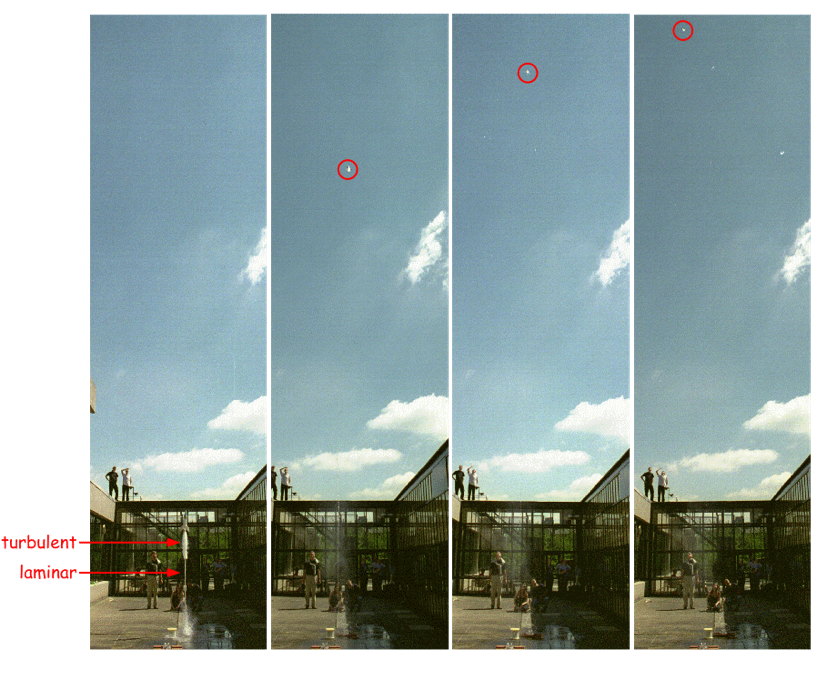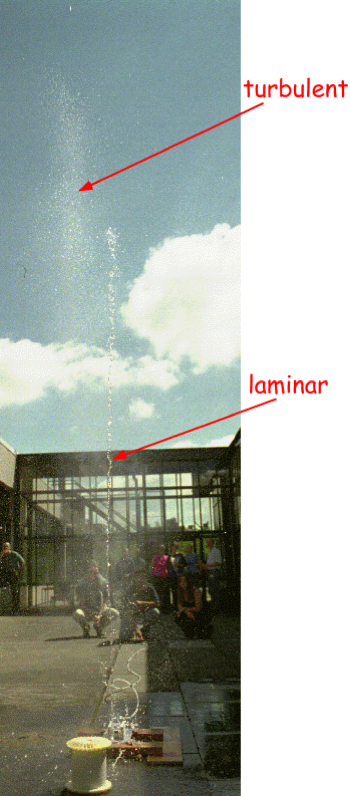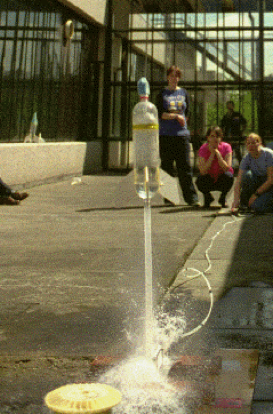Water Rockets

Here a few images from one of our water rocket workshops for pupils. The rockets consist of bottles with very simple fins and nose cones, the type even a novice can produce in a short time. Some of the photographs reveal details that cannot be seen easily during the split second of the launch.
Launch 1:
This series of images shows a flight of the rocket from start to culmination. One can see that the water expelled first flows out in a straight and narrow beam (i.e. a “laminar” outflow). Towards the end of the “burning phase”, water and pressurised air are expelled together, the air leading to a turbulent, wide spray of water droplets which you can see as a white cloud right under the rocket.

Launch 2:
Also in this series of images the laminar and turbulent outflow are visible. At the end of the accelerating phase the rocket is only about 2-3 m high. Its velocity at this point is maximal and reaches up to 200 km/h. In the right image the thin white thread is visible that was used to determine the maximum height of the flight. It is pulled off the white reel next to the launch pad.



Launch 3:
The left image shows the rocket right after the launch. The water is still expelled at a high speed and the rocket just lifts off. In the second image the rocket is no longer visible, but there are two distinct clouds of droplets in the air. The first one (labelled laminar) is well confined along the trajectory of the rocket and originates from the laminar outflow. The second one forms a spray of small droplets from the turbulent water-air outflow phase.


Launch 4:
Here you see a rocket standing still at the launch pad. It is filled with about one third of water. The rest of the volume is pressurised air. This rocket has a very primitive nose cone made of the top of another bottle and a piece of styro foam to sharpen it up a bit. The fins are made of a light-weight foam board attached to the bottle with hot glue.


Launch 5:
Here the laminar outflow is nicely visible. Only little water is left in the rocket.


